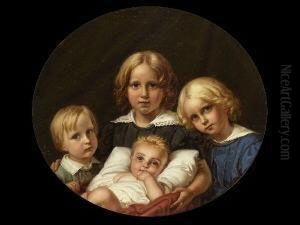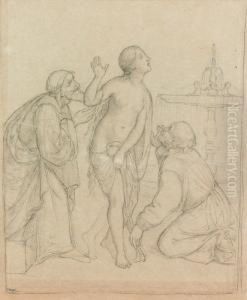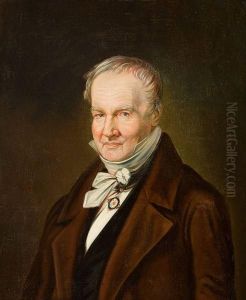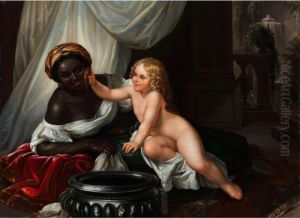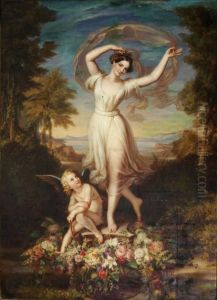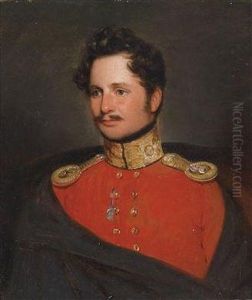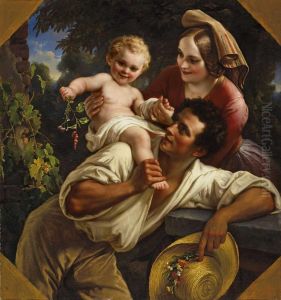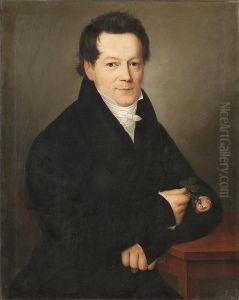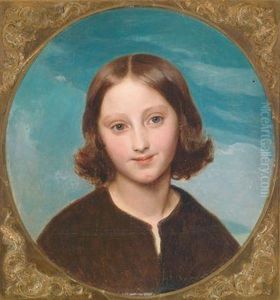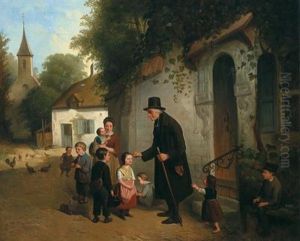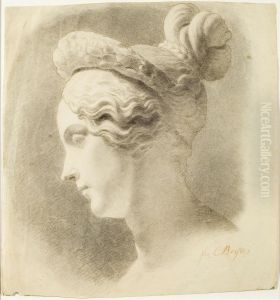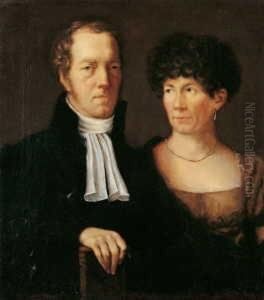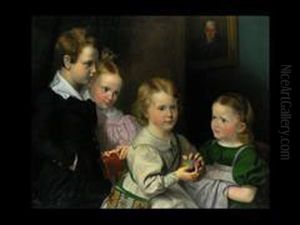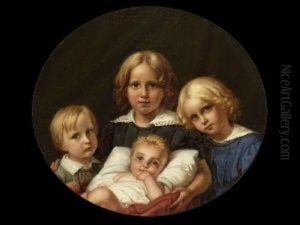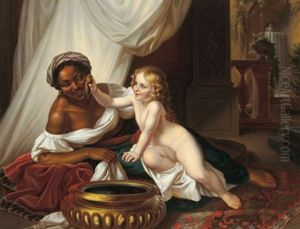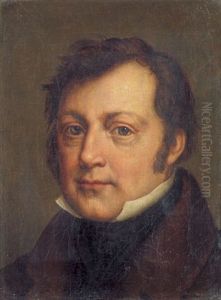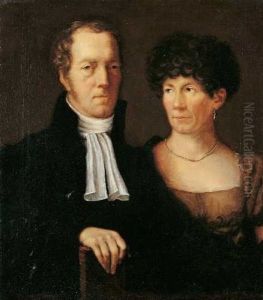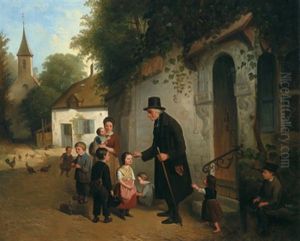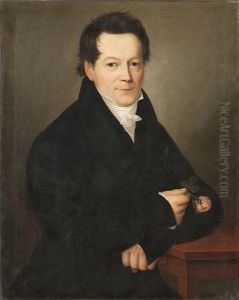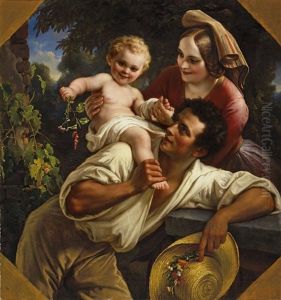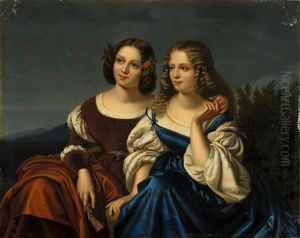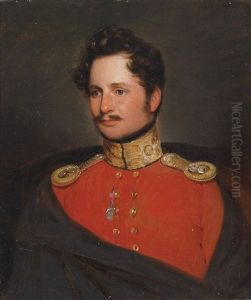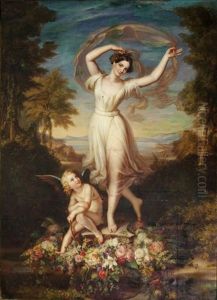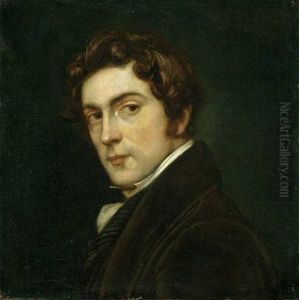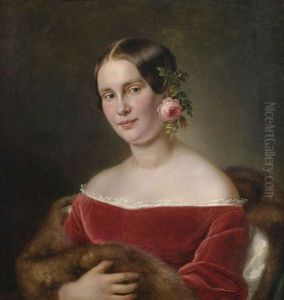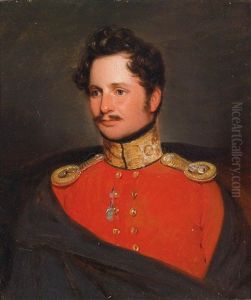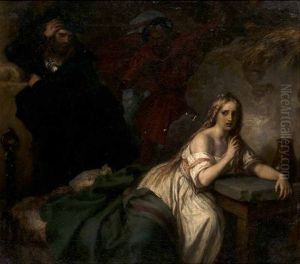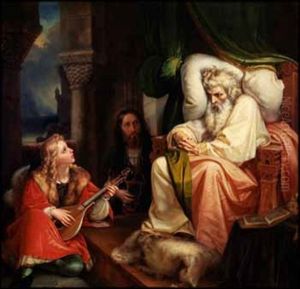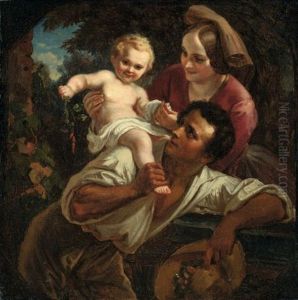Karl Joseph Begas Paintings
Karl Joseph Begas was a prominent German painter and art professor active during the 19th century. Born on September 30, 1794, in Heinsberg, near Aachen, Germany, Begas is best known for his portraits and historical paintings that reflect the Romantic spirit of his time. He was part of the Begas family, a dynasty of painters, sculptors, and architects who played a significant role in the German art scene of the 19th and early 20th centuries.
Begas received his initial artistic training from his father, a minor painter, before moving to Paris in 1811, where he was greatly influenced by the works of the French neoclassical painter Jacques-Louis David. After his stay in Paris, Begas continued his studies in Italy, spending time in Rome from 1812 to 1814, where he was exposed to the works of the Italian masters, further shaping his artistic development.
Upon his return to Germany, Begas quickly established himself as a leading portraitist, drawing commissions from the nobility and the burgeoning bourgeoisie, eager to immortalize their status through art. His work was characterized by its fine detail, psychological depth, and the use of light and shadow, which brought his subjects to life. Begas’s portraits were not just mere representations; they captured the essence and character of the individuals he painted, making him a sought-after artist of his time.
In 1820, he was appointed court painter to the Prussian Crown Prince, Friedrich Wilhelm (later King Friedrich Wilhelm IV), which significantly boosted his career and reputation. Begas’s relationship with the Prussian court underscored his role in the cultural life of Berlin and allowed him access to influential circles.
Beyond portraiture, Begas also explored historical and mythological themes, imbuing his works with a romantic sensibility that resonated with the zeitgeist of his era. His historical paintings often depicted scenes from German history, contributing to the rising tide of nationalism in Germany.
In addition to his painting career, Begas was an influential teacher, serving as a professor at the Prussian Academy of Arts in Berlin from 1826 until his death. In this role, he mentored the next generation of German artists, imparting his technical skills and artistic vision.
Karl Joseph Begas died on November 7, 1854, in Berlin, leaving behind a legacy that had a lasting impact on German art. His sons continued the artistic tradition of the Begas family, becoming notable artists in their own rights. Through his work and teaching, Begas played a pivotal role in the development of 19th-century German painting, bridging the gap between neoclassicism and romanticism.
